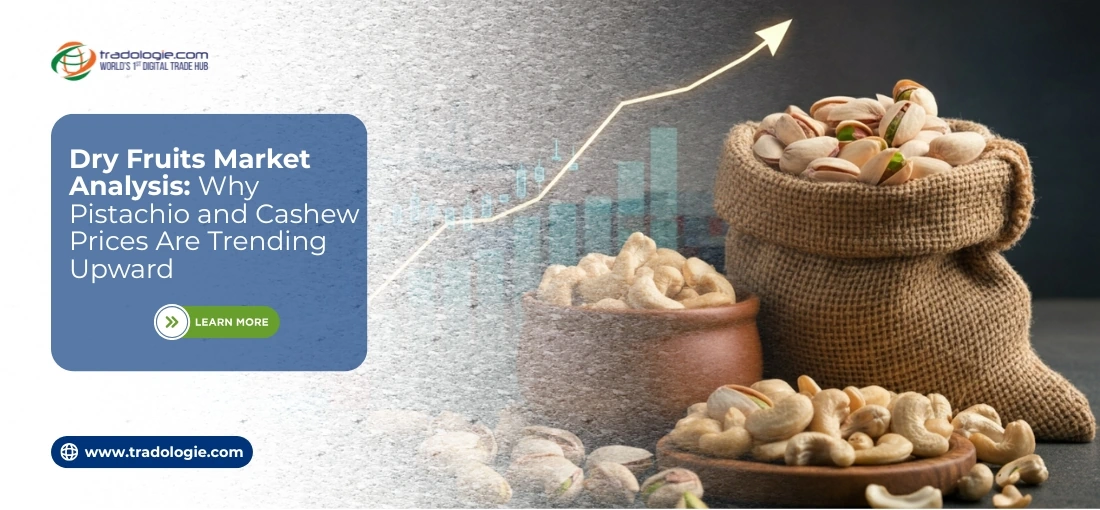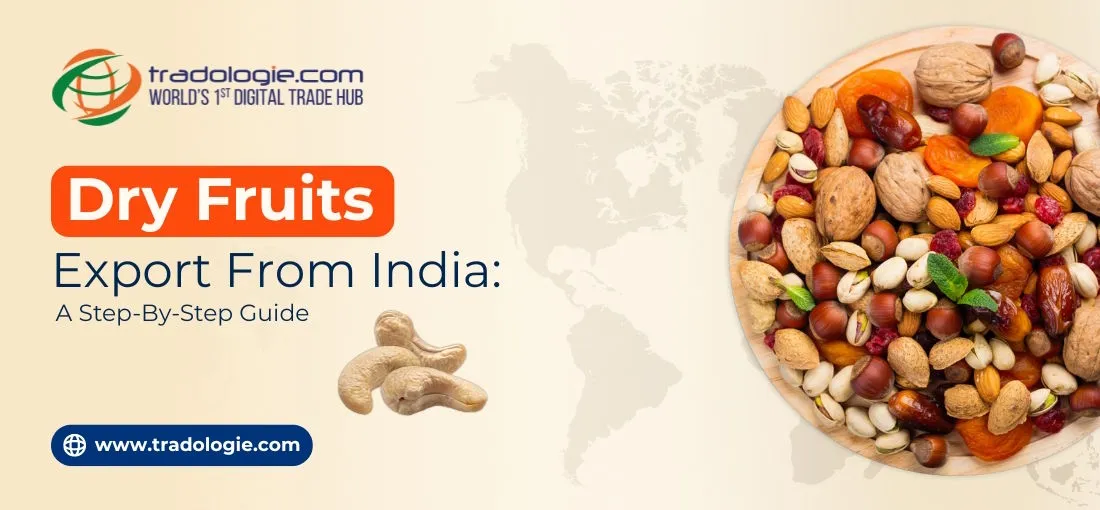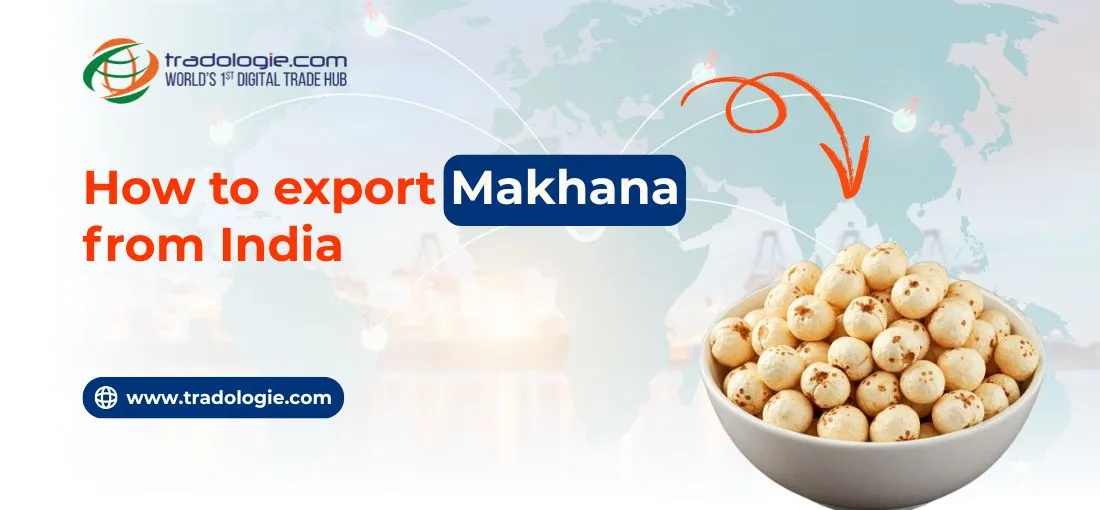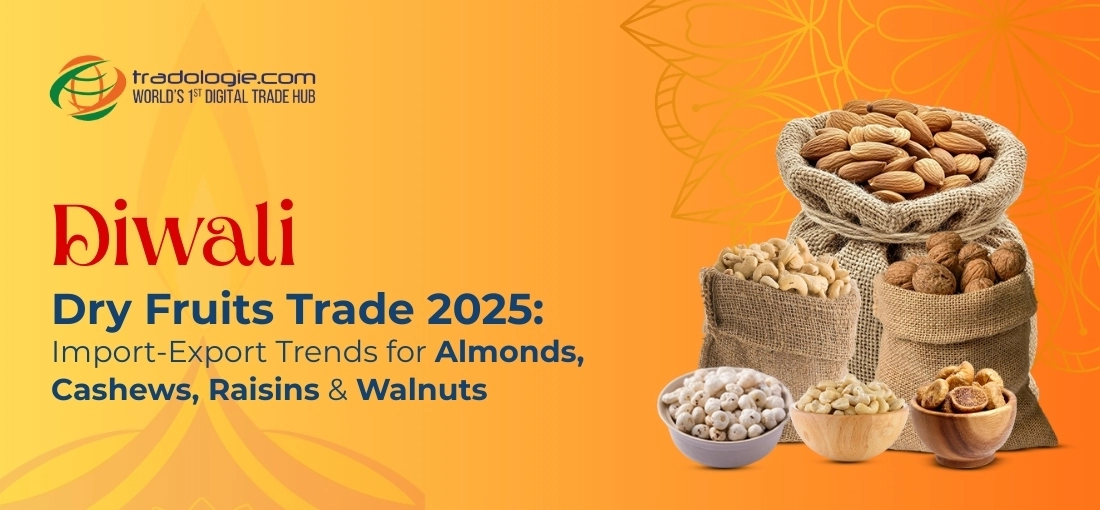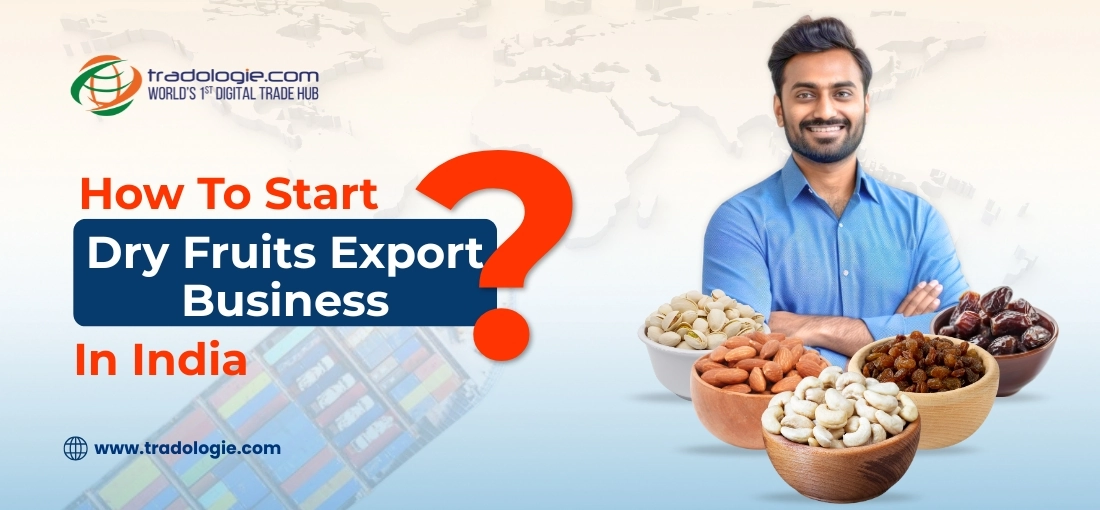Dry Fruits Market Analysis: Why Pistachio and Cashew Prices Are Trending Upward
Key Highlights:
- Climate Impact: Pistachio and cashew prices are being affected by weather events, like droughts in the U.S. and uneven harvests in West Africa and Iran.
- Rising Demand: More health-conscious snacking and the increasing use of nuts in premium foods are boosting global consumption in retail, bakery, and industrial sectors.
- Supply Challenges: Tariffs, currency swings, and higher processing costs are adding pressure, pushing international nut prices higher.
Introduction:
Want to take your dry fruits trading business to the global stage?
The global dry fruits market is changing quickly, and pistachios and cashews are getting more expensive. The price of pistachios has gone up almost 30% since last year. This is because more people want them, supply hasn't been able to keep up with the demand, and trade patterns have also been shifting gears quickly. Thus, Bulk Dry fruits Buyers need to stay alert to make smart purchases.
Pistachio prices have increased by nearly 30% compared to last year. This is due to the growing demand, limited supply, and variable patterns.
Dry Fruits Latest Market Trends
Pistachios
The Pistachio market has been growing continuously. More and more people are focusing on health and are changing their lifestyles. Consumers are more careful while choosing foods packed with nutrients, and pistachios, full of protein, fiber, and antioxidants.
In both retail and industrial sectors globally, pistachio consumption has been expanding, particularly in confectionery, bakery, and snack manufacturing.
But, production faces notable challenges that are affecting global supply. Let's have a look at the key factors affecting the market.
- U.S. Supply Challenges: The United States provides over 40% of global pistachios but has faced severe droughts and water shortages in California's Central Valley.
- Production Drop: According to the U.S. Department of Agriculture, pistachio production in 2024 fell by nearly 15% compared to 2023 due to bad weather and reduced water allocations.
- Iran's Declining Yields: Iran, the world's second-largest pistachio producer, has reported lower harvests because of climate-related stress.
These supply shortages have led to higher pistachio prices in the global market.
Cashews
Cashews are following a similar trajectory. With demand coming from snack producers, vegan food companies, and plant-based milk alternatives, consumption has been rising continuously.
Again, the shift in the market toward healthy snacking and sustainable diets by health-focused consumers continues to benefit cashews. Let' s take a look at the key points:
- Ivory Coast Production: Ivory Coast, the world's biggest cashew producer, produced about 1.3 million metric tons in 2024, which is 5% more than the year before.
- Other Key Players: India, Vietnam, and Brazil are also important in the cashew market, with India being a major center for processing.
- Price Challenges: Global cashew prices are affected by currency changes, higher labor costs, and trade risks, including possible U.S. tariffs on nuts.
This has kept cashew prices firm, especially during peak consumption months.
Global Supply Dynamics
Pistachios
- The U.S. dominates pistachio exports, primarily targeting Europe, China, and the Middle East. However, supply shortages due to erratic weather have opened opportunities for Iranian pistachio exporters.
Cashews
- Cashew supply dynamics are centered in West Africa and Asia. The Ivory Coast continues to expand output, aiming to cross 1.5 million MT in the next two years. Meanwhile, Vietnam remains a major exporter of processed kernels, handling nearly half of global cashew processing.
India continues to play a dual role as both producer and processor, ensuring consistent supply globally.
Dry Fruits Price Drivers
Several interconnected factors are driving pistachio and cashew price trends:
- Supply Shortages: Climate change has led to lower yields in key producing regions, especially the U.S. and Iran for pistachios.
- Rising Global Demand: More health-conscious consumers and growing use in premium foods like bakery and confectionery are driving demand up
- Trade Barriers: Changing tariffs, shifting trade rules, and currency ups and downs are affecting global prices.
- Processing Costs: Higher wages, transport delays, and energy expenses are adding to overall costs.
- Seasonal Variations: Harvest cycles in West Africa and India can cause short-term spikes in cashew prices
Impact on Dry Fruits Buyers and Consumers
For retailers, wholesalers, and processors, these dynamics translate into higher procurement costs. Consumers may encounter increased retail prices for nut-based snacks, bakery items, and confectionery goods.
Industrial buyers, particularly in Europe, the Middle East, and Asia, face challenges in securing steady supply. Bulk buyers are increasingly shifting toward direct sourcing models or verified B2B platforms to secure competitive pricing and reliability.
Procurement Insights for Bulk Dry Fruits Buyers
To navigate volatility into the market, businesses should adopt a more careful and strategic procurement approach:
- Leverage Verified B2B Platforms: Platforms like Tradologie.com connect dry fruits buyers with multiple verified exporters, ensuring transparent pricing and streamlined procurement.
- Diversify Suppliers: Sourcing from multiple countries reduces dependence on single-region supply and mitigates risks from tariffs or crop failures.
- Plan Ahead for Peak Seasons: Advance dry fruits procurement before peak demand seasons ensures steady supply and better cost management.
- Check Certifications: Compliance with international standards like ISO, HACCP, and FSSAI guarantees quality and safety.
- Negotiate Bulk Deals: Large-volume contracts often bring discounts, better shipping terms, and assured allocation during shortages.
Dry Fruits Future Outlook

The outlook for pistachios and cashews in 2025 remains bullish. Rising health-focused consumption, premium food applications, and constrained supply will continue to push prices upward.
"Industry reports say that the global nuts and dried fruits market is likely to grow by 5-6% each year until 2028. Pistachios and cashews are expected to lead both in sales volume and value."
Sustainability initiatives are also shaping the market. Dry fruits Producers in India and Africa have been recently investing steadily in eco-friendly farming and fair-trade certification. On the other hand, consumer markets in Europe and North America are rewarding ethically sourced nuts.
- Emerging markets in Asia-Pacific and the Middle East are projected to drive future demand.
Conclusion
Pistachios and cashews are seeing rising prices due to limited supply, growing global demand, changes in trade, and climate effects. Bulk buyers need to keep track of these market variables in order to plan their purchases and source their agro-commodity product more efficiently.
Working with verified dry fruits suppliers, planning purchases ahead, and focusing on sustainable sourcing helps buyers in different ways. First of all, it allows them to keep a steady supply while getting competitive prices in the market.
Businesses that watch market trends closely and plan carefully in 2025 will be in a good position to take advantage of the rising global demand for high-quality dry fruits.

